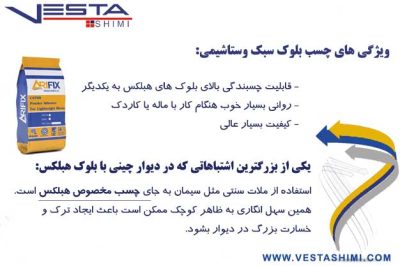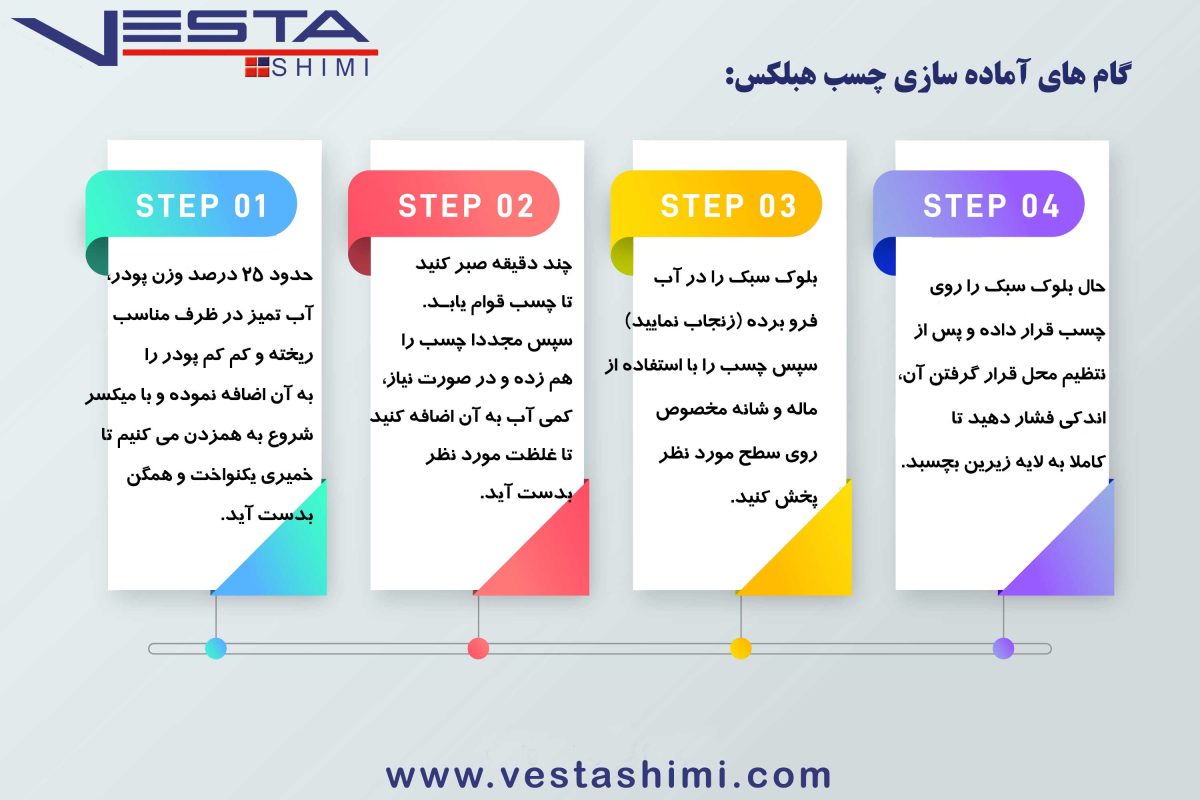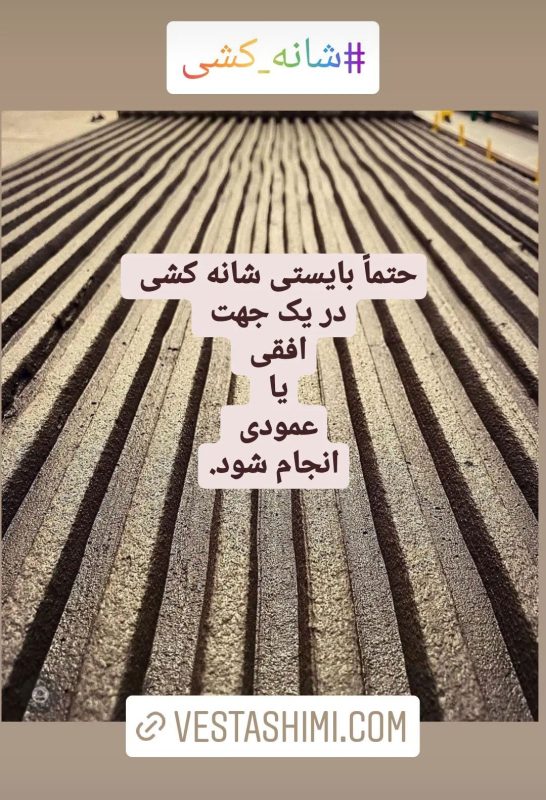Frequently Asked Questions
Tile adhesive is a chemical substance by which the tiles are placed in their desired place and strengthened.
This adhesive is used for gluing tiles, ceramics, porcelain, natural and artificial stones on all cement, stone, brick, ceramic, plaster, etc. surfaces on the floor and wall in indoor and outdoor environments (building exterior). Takes.
In addition, you can use this product on surfaces with a heating system, balconies, patios, pools, gypsum surfaces, plasters, gypsum blocks, light concrete, and old stonework.
Advantages of using tile adhesive:
Resistance and strength after years of use
Having high adhesive strength
High quality tile gluing
Heat insulation in wet areas
Higher speed than other materials due to installation
No need to destroy the lower part of tiling
Can be used in all cold and tropical regions
Can be used in areas that are exposed to water, such as the walls of pools and...
Important points in choosing tile adhesive:
In order to know which type of tile adhesive is suitable for our work, we must pay attention to the following points:
The area on which we want to apply the glue.
Place of use of glue in terms of whether it is dry or wet
The type of base material on which the glue is supposed to stick.
Polymer as an adhesion agent is widely used in various industries.
In a way, it can be said that polymer will strengthen the adhesive strength of construction, industrial products, etc.
Also, the use of polymer binding powder can be a factor to prevent the penetration of moisture and increase the strength of the tile adhesive.
We need 4 parameters to calculate the consumption of banding powder:
Tile size
band width
The depth of the band
Total square footage
Regarding banding, it is necessary to explain that the execution of ceramics or tiles without banding has become obsolete, and performing ceramic work without banding has reduced the adhesion of ceramics to each other, and also the contraction and expansion of ceramics has made them less durable. And over time, it starts to loosen or peel off.
For the convenience of calculating the amount of binding powder consumption, we have placed a table on the company's website.
In the right column of this table, the size of the tile and its depth
In the first horizontal row, the width of the strap is inserted
which is the result of the intersection of the band width and the size of the tile,
A number is obtained, which is obtained by multiplying it by the square meter of the tile, the consumption of binding powder.
To calculate this amount more accurately, we can use the formula that we prepared in this regard.
Chemical resistance table of Epofix products
Grout is an expanding mortar in two types
Cement base grouts and
Epoxy grouts are produced.
Grout is used to fill empty spaces and large and deep cracks.
Usually, after the mortar dries and its water evaporates, it creates an empty space.
Instead, the grout, after it loses its water, expands and fills the empty spaces and has anti-shrink properties.
From this product to:
filling under the plate of the column of the sheds,
Installation of machine rails,
deep cracks,
filling the empty spaces under the chassis and base plates,
Armator brokerage,
It is used to fill concrete holes and pits.
In order to compensate for the decrease in mechanical resistance resulting from the expansion of the grout, we have prepared this product in the form of polymer and by doing this, we have added to its mechanical resistance.
The materials used in this composition have the highest level of mechanical resistance.
Also, polymer materials make the grout water evaporate later and have higher technical characteristics, including better compressive, tensile and bending resistance.
Grout and mortar are similar in appearance.
But in terms of application, they are different from each other.
Grout is an expanding mortar based on cement, hydraulic fillers and necessary additives.
Mortar usually decreases in volume after drying and losing its water. To compensate for this issue, we use grout in cases where we need the volume of the mortar not to decrease.
Grout is an expanding mortar with different expansion percentages.
To compensate for the decrease in mechanical pressure resulting from the expansion of the mortar, Vestashimi Spadana has produced polymer grout in two types, hard and soft.
The choice of tile adhesive can have many reasons
Like:
Much higher execution speed
Much higher strength
Much more adhesion
But sometimes the only option for tiling is to use tile adhesive.
Like where porcelain ceramics are used.
(Posslan ceramics cannot be installed using grout because they almost do not absorb water).
Another place when you want to install the new tile on the old tile
(In this case, the grout is not used at all. And even before the tile adhesive, you should roughen the surface of the previous tiles to have a perfect adhesion.
and places where you use new materials such as two-component seals for insulation.
(These types of materials do not absorb water, so you cannot use your tiles as a grout and they must be glued with tile adhesive.
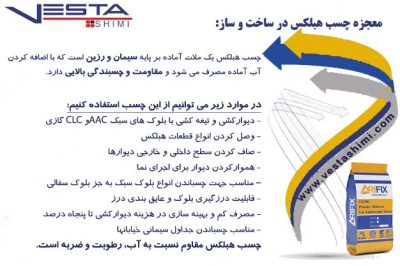
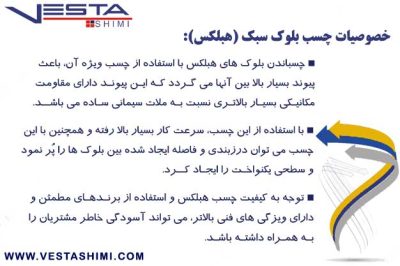
High-quality tile adhesive has several features.
First, it has a standard mark.
Adhesives that do not have standards cannot even be sold.
You can see that the chemical adhesive has the standard code. If you text this code to the product authenticity SMS number 10001517, it will give you a message to confirm the product's authenticity.
The standard mark is placed on all Vesta products. which also has a code.
Second, it should have a good spatula. It means that it easily sticks to the surface and the tile does not slide on the surface and is easy to install.

The advantage of Vestashimi products
Strapping by Epofix300 strapping paste
Applications: bathroom, toilet, patio, kitchen, elevator pits and all places where Izogam is used.
Substructure:
- First, make the surface below the work free from any particles of dust, grease, etc.
- If there are deep cracks, clean the inside of the crack completely, and if there are hairline cracks, use a mechanical device to open the crack and start working after cleaning it.
- No paint or waste materials on the surface.
How to use waterproofing pack in indoor environments:
First, we mix about 2 liters of BV230 liquid with 3 kilos of its special powder and turn it into a slurry, and by using a brush or roller, we completely cover the work surface.
After drying, mix the remaining 12 kilos of powder with 2 liters of water and 2 liters of BV230 supplement liquid and make it into a paste and apply it on the work surface with a spatula or trowel, and after drying, if Hairline cracks were observed, again like the first hand, we prepare the grout and apply it on the surface with a brush or roller, and then install ceramic tiles.
- It is worth mentioning that in places such as elevator pits where water may still enter the pit from some places, we first block the ways of water infiltration into the pit with an early arrester, after drying, we start the sealing pack operation. .
How to perform in environments such as rooftops, swimming pools, saunas and jacuzzis:
First, we mix two liters of BV230 liquid with a little of its special powder and make it into a slurry, and we completely cover the work surface using a brush or roller.
Then we use plastic nets with holes of about one millimeter and draw them on the work surface. After drying, we mix the rest of the powder with the rest of the liquid, if added, along with water, and apply it to a thickness of 2 mm on the work surface with a spatula.
Note 1: Because most of the time, cracks occur in vertical or horizontal corners, try to stretch the mesh in the corners by at least 50 cm to the adjacent wall.
Note 2: If hairline cracks are seen on the work surface after drying, make a little bit of the same first-hand grout and fill all the cracks with a brush or roller.
Note 3: After the second hand is dry, you can install ceramics or if you are not going to install ceramics, do not drain the pool for a maximum of 10 days until it reaches its final strength.
Note 4: In case of installation on the old isogam, it is recommended that the isogam is completely collected, or if the isogam has not lost its properties, remove the aluminum layer on it and after scratching the isogam, proceed to install and Run the sealing pack.
Note 5: Vestashimi's sealing pack, after implementation, can withstand temperature resistance of -25 to +80 degrees Celsius.
In addition, when applying the sealing pack in external environments, the weather must not be rainy for at least one week.
The solution is to use a sealing pack.
This product is two-part and consists of a powder package and a complementary liquid, and is reinforced using polymer materials and fibers, and it is a type of reliable and permanent sealing system, which due to its unique properties, such as sealing concrete surfaces. And cement structures are resistant to positive and negative water pressures and with very good adhesion to the surfaces under work, preventing cracking, good resistance and reducing the absorption of solar energy for sealing all concrete surfaces such as tunnels, docks, lines It is suitable for transporting water in elevator pits, swimming pools, roof insulation, sealing sewage treatment plants, water tanks, etc.
Vestashimi sealing pack
BV230
- The main reason for using a toothed trowel or a comb to apply glue on the back of ceramic, stone, tile and porcelain is to apply the glue evenly.
The appropriate thickness of the glue is 3 to 5 mm, for a thickness of 3 mm, a toothed spatula number 6, a thickness of 4 mm, a toothed spatula number 8, and a thickness of 5 mm, a toothed spatula number 10 is suitable.
When applying glue on the back of tiles or ceramics, the hand should be at 45 degrees to the horizon.
Combing must be done in a horizontal or vertical direction.
Avoid combing in different directions.
Help to remove the air between tiles, ceramics, etc. and the desired surface with uniform blows or by using a vibration device.
Even strokes should continue until you hear a popping sound from the ceramic surface.

